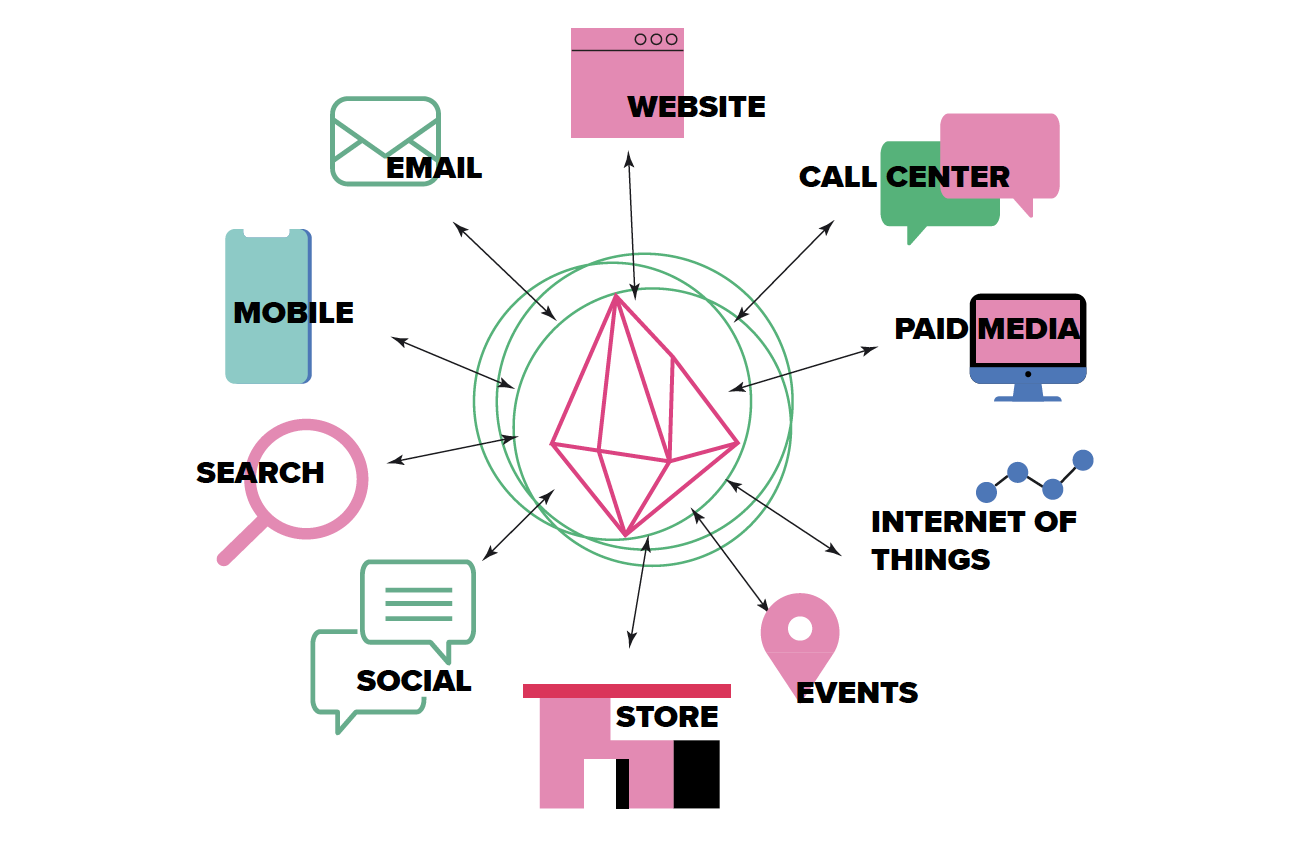By Michaella Pesheva, Digital Marketing Specialist
In recent years, retail has gone through an immense and intriguing transformation, with traditional brick and mortar stores needing to seamlessly integrate with their online store. This evolution of digital disruption is forcing established players in the retail industry to satisfy the demands of increasingly connected, demanding, and fickle customers. The retail industry is often divided into two separate camps: online and offline. Whilst the urge to jump on the digital revolution bandwagon is there, rushing to keep up with consumer demand, retailers also prefer to keep their brick and mortar side of the business going. 2020 is the year of the omnichannel strategy for retailers. When you merge online and offline to deliver the best possible experience for your customers.
The separation of brick and mortar and online shopping (including e-commerce, s-commerce, and m-commerce) is making customers decide whether to purchase online or offline. The key is to have a perfect blend of providing both online and offline omnichannel experiences that exceed customer expectations. According to a 2019 survey of 2,000 global consumers by the Chief Marketing Officer (CMO) Council, in partnership with Pitney Bowes, revealed more than 85 percent consumers prefer a blend of both digital and physical channel experiences as the preferred way of interfacing with brands. However, only 13 percent believe brands are fully meeting this expectation.

Thus, the idea of merging the digital with the physical worlds through technological innovation is increasingly becoming a necessity for brands worldwide. The concept of ‘phygital’ bridges the gap between the online and offline consumer journeys and ensures unique interactive experiences for each individual customer. Phygital is depictive of how physical and online retail channels are merging, blurring, and influencing each other in innovative ways.
To excel in this new environment, digital and physical touchpoints must be blended in a manner that provides richer and more targeted customer experiences. Consumers and shoppers now have in-store, online e-commerce, m-commerce, and s-commerce networks. As consumers move from reading/writing reviews to voice search to virtual reality (VR) “before-you-buy” experiences, it would be fascinating to witness how Phygital evolves over time.
The retail industry is learning to evolve digitally at the pace required by demand or face extinction. How digital influences occur at home and in store has an immediate impact on customer experience. Many retail stores are now "clicks and mortar", and hence customer-centric. But what does it mean to be customer-centric in the Phygital era? Phygital strategies aim at making the following terms a reality: immediacy, immersion, and interaction.
- Immediacy: making sure messaging happens at the exact moment in time in response to real-time customer interactions
- Immersion: making sure users are actively involved in the experience regardless of the preferred channel
- Interaction: making sure communication activates the physical/emotional part of the purchasing process
In theory, unifying a customer’s physical and digital behavior should be implemented by every customer-centric business. However that is only plausible by making sure the correct technology is set in place. That includes capturing, processing, and ingesting a large amount of customer data to acquire enough contextual queues—for personalized customer experiences across channels and multiple interactive devices.
Capturing the data
A 2019 retail by BCG revealed customers were 110 percent more likely to purchase from a brand offering personalized services based on their preferences, and 40 percent more likely to spend more than they had planned. However, only 20 percent of them are satisfied with the level of personalization they receive from companies.
Bridging the gap between the physical and the digital world not only enriches the customer experience and strengthens the emotional bond with a brand but also generates additional contextual data about the customers shopping behavior. This allows for brands to reach out to customers with hyper-personalized messages at the correct moment and place, whilst taking into consideration the customer’s preferred purchase location, payment method, social media activity, and more.

Another situation could be when a customer spends time window shopping for headphones but leaves without purchase. Why not respond to this behavior through a targeted e-mail campaign providing a personal discount? Such a data-driven campaign would prove to be much more effective than just a personalized e-mail subject line because the customer’s needs are well-understood.
By continuing their focus on being data-driven, retailers can access, collect, and ingest existing data into a centralized system to drive decision-making; train a model to accurately interpret masses of data; and produce an outcome that will provide customers with a personalized shopping experience. Insights can help to gain an accurate and deep understanding of the data.
At SoftServe, we have developed a Demand Prediction solution that considers customers different patterns and purchasing habits over time, location, and channel to answer their needs and effectively manage the stock.
In order to incorporate insights from customers’ physical interactions, we have listed below key technologies that can help extract the context for each individual to serve a highly personalized and connected omnichannel experience.

